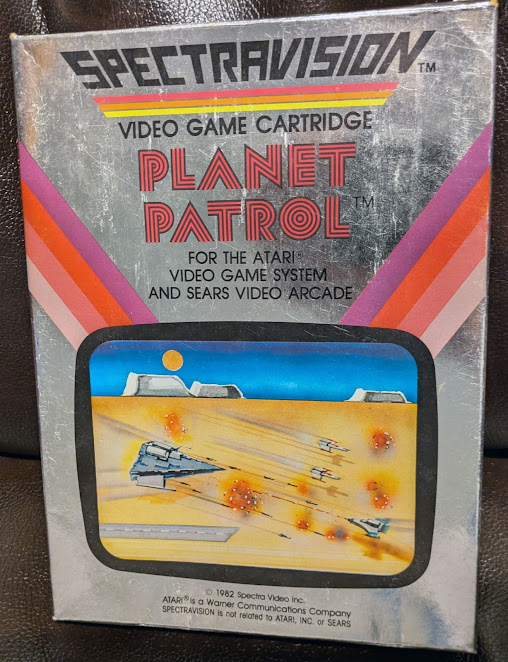20th Century Fox produced a number of interesting titles for the Atari 2600 in their "Games of the Century" line during the early 1980's. And in November of last year, I looked at the fast-paced Beany Bopper, where the objective is to stop those "meany beanies from buzzing the city". This month I'll be discussing their 1983 release Bank Heist, a game that doesn't feel quite as frantic when compared to bopping beanies but nevertheless offers enough of a challenge to keep it interesting.
Bank Heist is a maze game designed by Bill Aspromonte where you control a getaway car driving through various cities robbing banks for cash. (Why else would a thief rob a bank after all)? Four different cities are represented by mazes of different configurations, with all having two passageways on both the left and right side of the screen. Three of these are wraparound tunnels which simply bring your car to the opposite side of the screen, while the final tunnel (the one on the upper right) is an exit to the next town. When you rob a bank by running over it, you're awarded points, but a cop car also appears and begins pursuit. To disable them, your car can drop a stick of dynamite out of the back tailpipe. And once a police car is disabled, a new bank appears ripe for robbing. Up to three banks can be on screen at a time, as can three pursuing police cars. In addition, your car burns gas as time goes by, and as a result of dropping dynamite. If you run out of gas, are caught, or blow yourself up accidentally you'll lose a getaway car. If you can rob nine banks in a town, you're awarded an extra car upon leaving the town. After the four cities have been cleared, you'll loop back to the first city, but the pace of the game quickens. The objective of the game is to get as high a money score as possible before running out of getaway cars.
Upon first look, Bank Heist is a straightforward maze game that harkens back to the early Atari 2600 release Maze Craze (which was billed as "A Game of Cops 'n Robbers"), as well as having some things in common with Pac-Man and other games like it. However, there are many enjoyable Pac-Man clones, so similarities like the wraparound tunnels aren't necessarily a bad thing. On the contrary, I found Bank Heist to be a lot of fun and noticed the game does have its own unique style. So put on your pin-striped suit, hop in your antique car and read on to learn more...
The first plus is that Bank Heist doesn't have an overly steep learning curve, except for getting the hang of when to drop the dynamite sticks, which makes playing it enjoyable fairly quickly. Basically, in the beginning stages, when the pace is slower (I played on the easier difficulty level), the trick is to let the cop cars get fairly close to you before dropping the explosive. And only in later stages, when things have sped up quite a bit, should they be dropped a bit further ahead of time (but still not way ahead). It also takes a bit of practice to get out of the habit of making any abrupt about-face turns that result in your car running into the dynamite which was just dropped. That factor differs from many other maze games where the only danger in such turns is the possibility of running into a pursuer. And speaking of turns, making them accurately (even with the trusted Atari 2600 joystick) in the somewhat complex mazes can get very challenging as the pace quickens. And the better one is at it, the higher the score. Indeed, my latest high-score run ended primarily from losing getaway cars due to missing crucial turns.





























